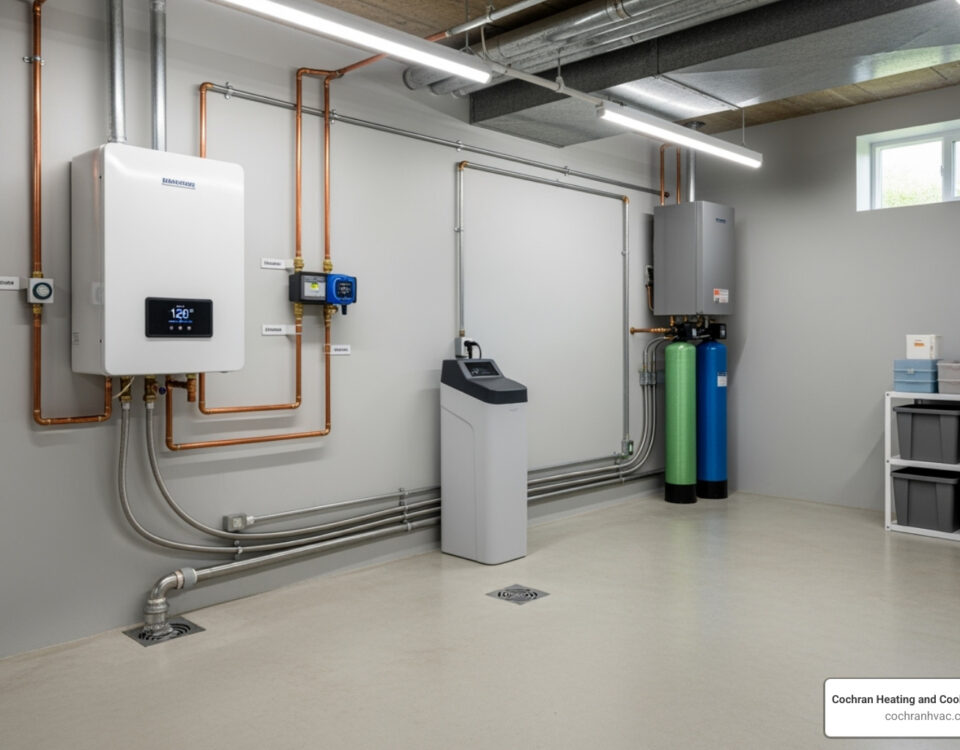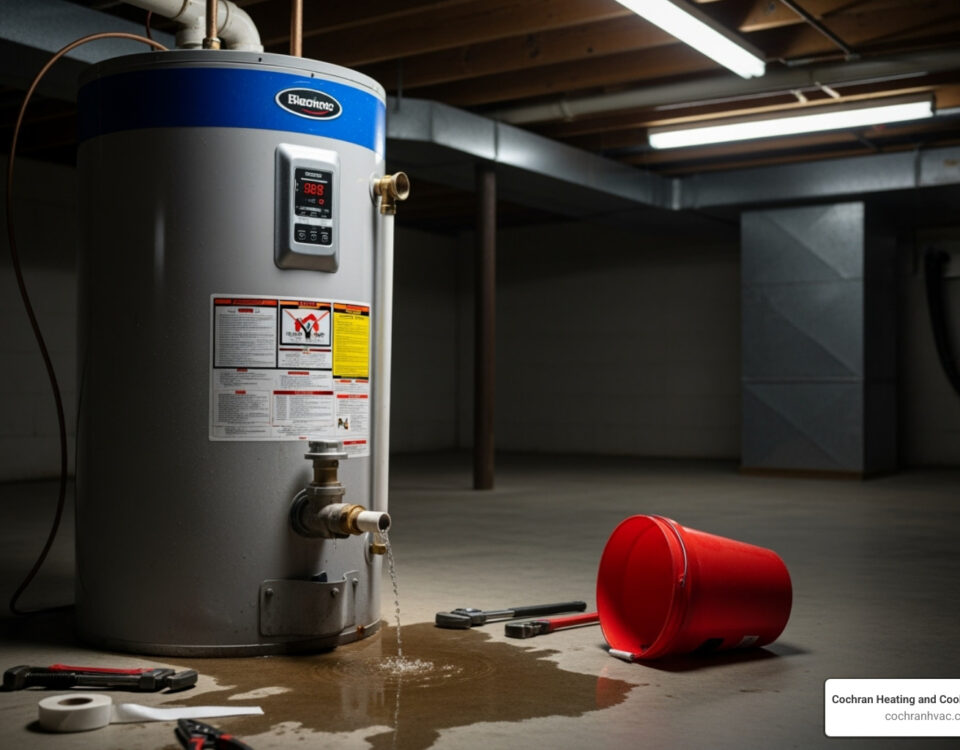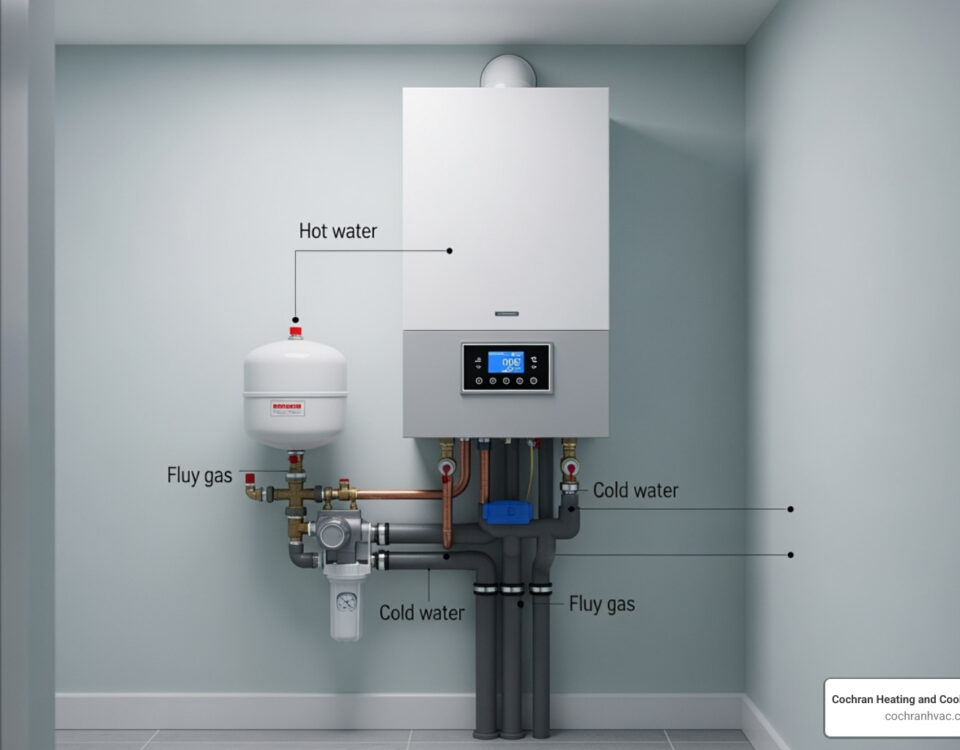Essential Boiler Repair Tips from Our Technicians
December 26, 2024Benefits of Professional Furnace Installation
February 6, 2025Installing a furnace is a crucial task that requires careful planning and expertise. A professional furnace installation ensures that your heating system operates efficiently and safely, providing comfort throughout the colder months. Understanding the process can help you appreciate the importance of each step and the value of hiring skilled professionals.
Preparation for Furnace Installation
Evaluating Your Heating Needs
One of the first steps in furnace installation is evaluating your heating needs. Our professionals start by assessing the size of your home and the existing heating infrastructure. It’s important to determine the heating load, or the amount of heat required to keep your home comfortable. This assessment considers factors such as square footage, insulation quality, and the number of windows and doors.
The goal is to ensure that the new furnace will be sufficient to meet your home’s heating demands without being overly large, which could result in inefficiency. An accurate evaluation helps in selecting a furnace that will provide consistent and efficient heating throughout your home. This step is crucial to avoid overloading the system and to ensure optimal performance.
Choosing the Right Furnace
Once heating needs are evaluated, the next step is choosing the right furnace. Various types of furnaces are available, including gas, electric, and oil furnaces. Each type has its advantages, and the choice depends on factors such as fuel availability, cost, and efficiency preferences. Our professionals will guide you through the options, explaining the benefits and drawbacks of each.
Efficiency ratings, measured by AFUE (Annual Fuel Utilization Efficiency), are an essential consideration. Higher efficiency furnaces cost more upfront but save money over time through lower energy consumption. We help you weigh the initial investment against long-term savings. Selecting a furnace with the right size and efficiency ensures reliable and cost-effective heating for your home.
Removal of the Old Furnace
Shutting Off the Power and Gas
Before removing the old furnace, safety is a top priority. Our technicians begin by shutting off the power supply to the furnace. This involves turning off the circuit breaker that controls the furnace. Next, the gas supply is shut off. This step is crucial to prevent any gas leaks, which can pose serious safety risks.
Shutting off the power and gas ensures a safe working environment for our technicians and prevents any accidental fires or gas explosions. Once these safety measures are in place, the process of disconnecting the old furnace can begin.
Disconnecting and Removing the Old Unit
With the power and gas safely turned off, our technicians proceed to disconnect the old furnace. This step involves detaching the electrical connections, gas lines, and any venting ducts attached to the unit. Careful handling is essential to avoid damaging any surrounding structures or components.
After all connections are safely removed, the old furnace is carefully taken out of its installation spot. Removing the old unit makes room for the new furnace and allows our technicians to prepare the area for the new installation. Proper disposal of the old furnace is also handled, ensuring that it is done in an environmentally responsible manner. This thorough removal process sets the stage for a smooth and efficient installation of the new furnace.
Installing the New Furnace
Setting Up the New Unit
The installation process begins with setting up the new furnace. Our professionals place the new unit in the designated spot where the old furnace was removed. Ensuring that the furnace is level and properly positioned is vital for efficient operation and safety. The unit is secured in place to prevent any movement or vibrations that could interfere with its performance.
During this stage, our technicians also check for any adjustments needed to fit the new furnace into the existing ductwork and venting systems. Proper alignment with these systems ensures efficient airflow and exhaust management, reducing the risk of leaks or performance issues. This careful setup is critical for the furnace’s efficient and safe operation.
Connecting Electrical and Gas Lines
Once the furnace is correctly positioned, the next step is to connect the electrical and gas lines. Our professionals connect the electrical wiring to power the furnace’s control system and ignition. Accurate wiring is crucial for the safe operation of the furnace and to prevent any electrical hazards.
The gas lines are then connected to provide fuel to the furnace. These connections must be tight and secure to prevent gas leaks, which can be dangerous. Our technicians use specialized tools and techniques to ensure that all connections meet safety standards. After making these connections, they check for any potential leaks using appropriate methods and tools. This attention to detail ensures that the new furnace operates efficiently and safely from the moment it is turned on.
Post-Installation Steps
Testing the System
After the new furnace is installed and connected, our professionals proceed with testing the system. This involves turning on the furnace and allowing it to go through a complete heating cycle. They monitor the furnace’s performance, checking for proper ignition, steady flame, and efficient heat distribution.
During testing, our technicians also listen for any unusual noises and observe for any irregularities in operation. This step ensures that the furnace is working correctly before it’s put into regular use. If any issues are detected, they are addressed promptly to ensure optimal performance and safety. Thorough testing helps confirm that the furnace installation was successful and that the system is ready to provide reliable heating.
Final Adjustments and Maintenance Tips
Once the system testing is complete, final adjustments are made to optimize the furnace’s performance. This may include calibrating the thermostat, adjusting airflow settings, and verifying the efficiency of the heating cycle. Our technicians make sure that the furnace operates at peak efficiency to provide consistent and cost-effective heating.
Additionally, our professionals provide maintenance tips to help you keep your new furnace in good condition. Regular maintenance, such as changing filters, cleaning vents, and scheduling annual check-ups, is vital for the longevity and efficiency of the furnace. These tips help ensure that your furnace continues to operate smoothly and reduce the likelihood of future repairs.
Conclusion
A professional furnace installation involves several detailed steps, from preparation to post-installation checks. Each stage is crucial to ensure that the furnace operates safely and efficiently, providing reliable heating for your home. Evaluating your heating needs, choosing the right furnace, removing the old unit, installing the new one, and performing thorough testing and final adjustments are all essential parts of the process.
For reliable furnace installation in Greensburg, PA, contact Cochran Heating and Cooling today. Ensure your home remains warm and safe with our professional expertise!



